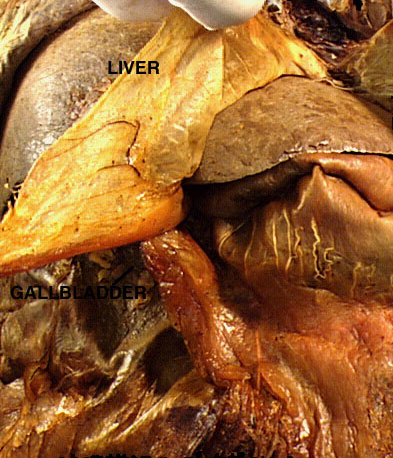The liver, gallbladder and biliary ducts develop from the hepatic diverticulum of the foregut. As the hepatic diverticulum branches into the ventral mesentery to form the biliary tree, it extends cranially into the septum transversum, a layer of tissue between the heart and the midgut that forms part of the diaphragm. The connective tissue, or stroma, of the liver develops from the septum transversum. This explains the close anatomical relationship between the liver and diaphragm, made evident by the formation of the bare area of the liver. Cranial remnants of the ventral mesentery become the falciform, coronary, and right and left triangular ligaments. These peritoneal ligaments connect the liver to the anterior abdominal wall and the undersurface of the diaphragm.
(NOTE: The biliary tree comprises the bile duct, cystic duct, common hepatic duct, right and left hepatic ducts and their tributaries.) |  |






